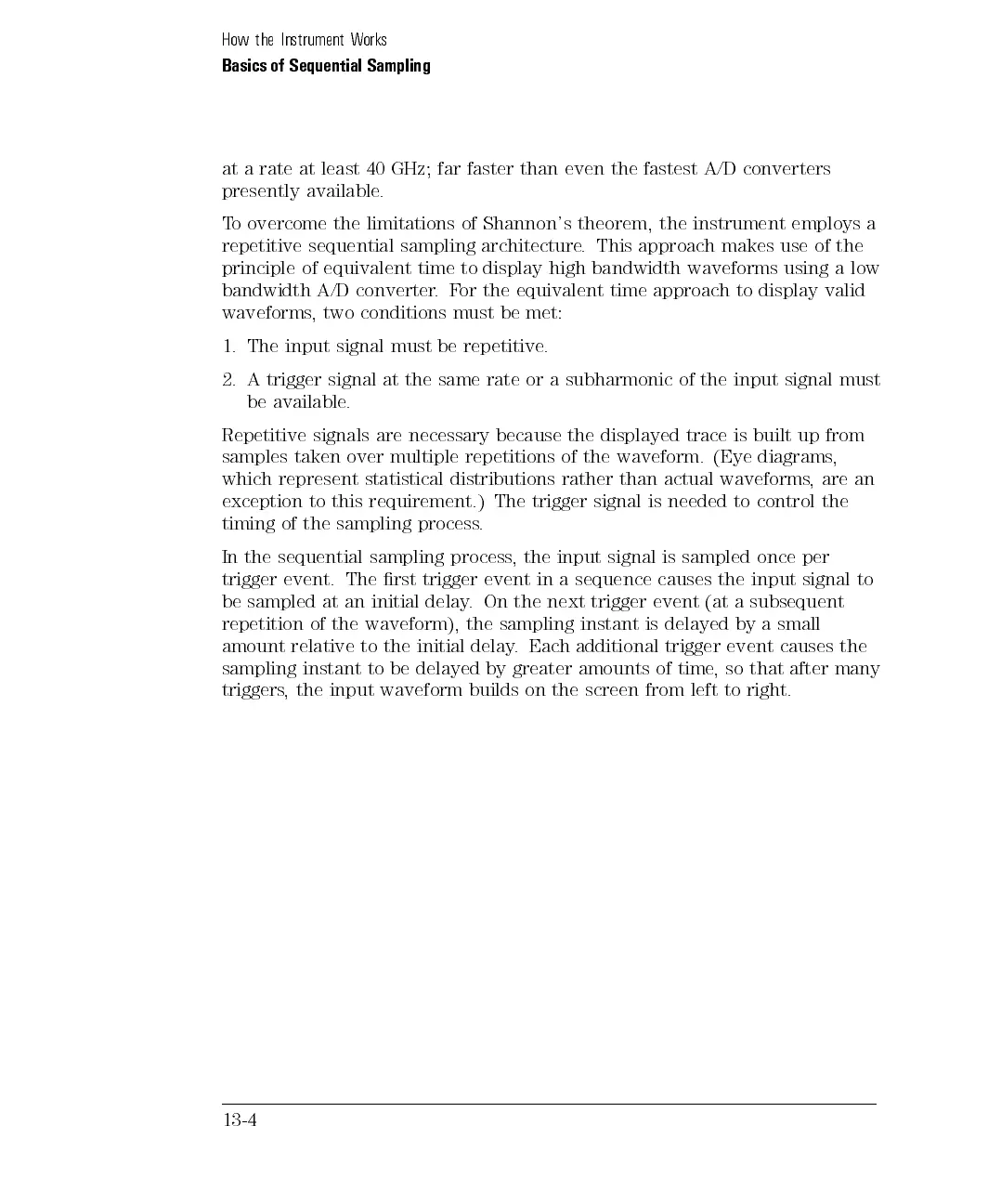How the Instrument Works
Basics of Sequential Sampling
at a rate at least 40 GHz; far faster than even the fastest A/D converters
presently available.
To overcome the limitations of Shannon's theorem, the instrument employs a
repetitive sequential sampling architecture. This approach makes use of the
principle of equivalent time to display high bandwidth waveforms using a low
bandwidth A/D converter.For the equivalent time approach to display valid
waveforms, two conditions must be met:
1. The input signal must be repetitive.
2. A trigger signal at the same rate or a subharmonic of the input signal must
be available.
Repetitive
signals
are
necessary
because
the
displayed
trace
is
built
up
from
samples
taken over
multiple
repetitions
of
the
waveform.
(Eye
diagrams
,
which
represent
statistical
distributions
rather
than
actual
waveforms
,
are
an
exception
to
this
requirement.)
The
trigger
signal
is
needed
to
control
the
timing
of
the
sampling
process
.
In
the
sequential
sampling
process
,
the
input
signal
is
sampled
once
per
trigger
event.
The
rst
trigger
event
in
a sequence
causes
the
input
signal
to
be
sampled
at
an
initial
delay
.
On the
next
trigger
event
(at
a
subsequent
repetition
of
the
waveform),
the
sampling
instant
is delayed
by
a
small
amount
relative
to
the
initial
delay
.
Each additional
trigger
event
causes
the
sampling
instant
to
be
delayed
by
greater
amounts of
time,
so
that
after
many
triggers
,
the
input
waveform
builds
on
the
screen
from
left
to
right.
13-4

